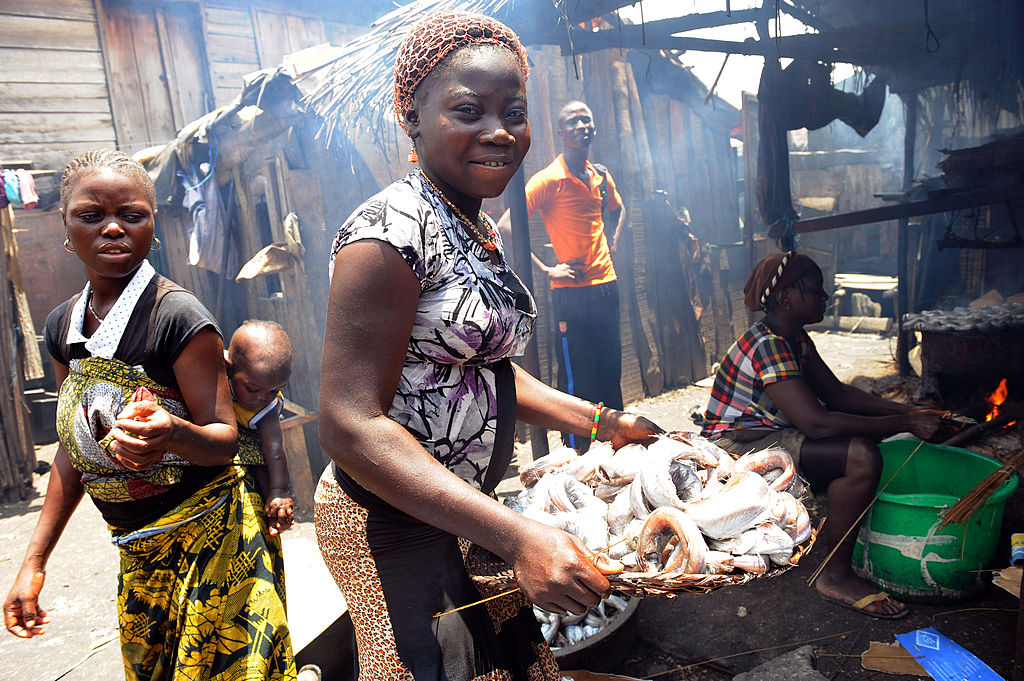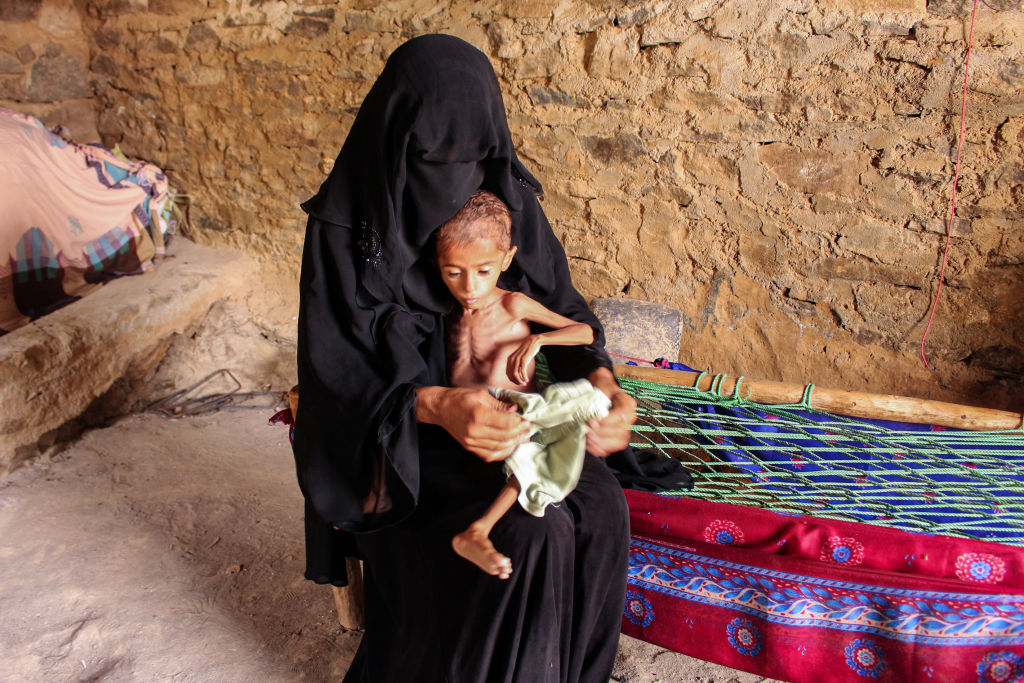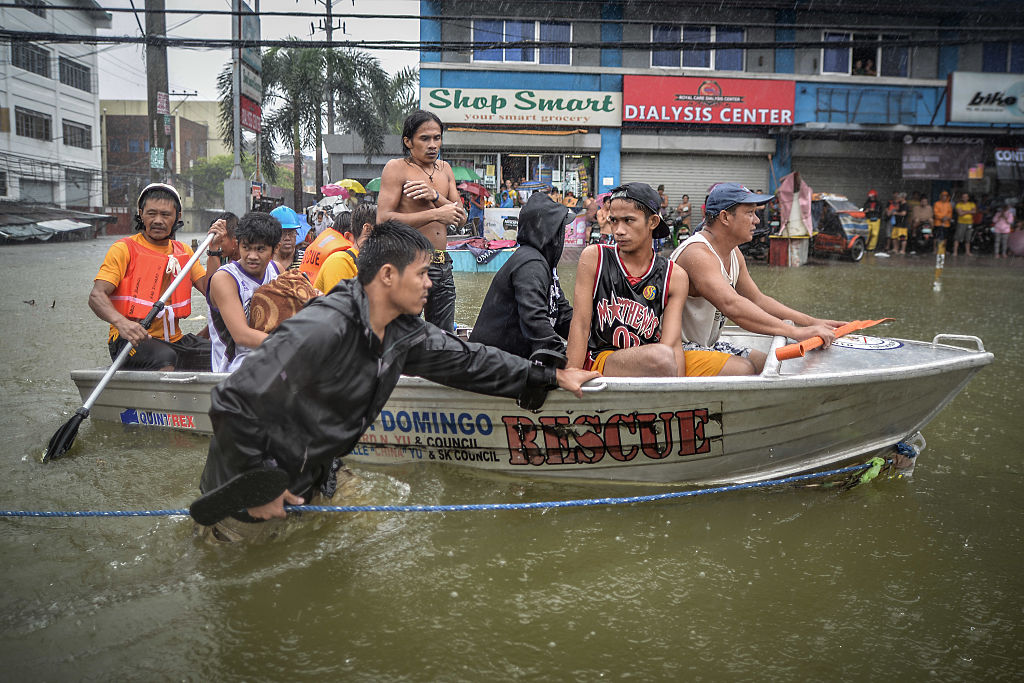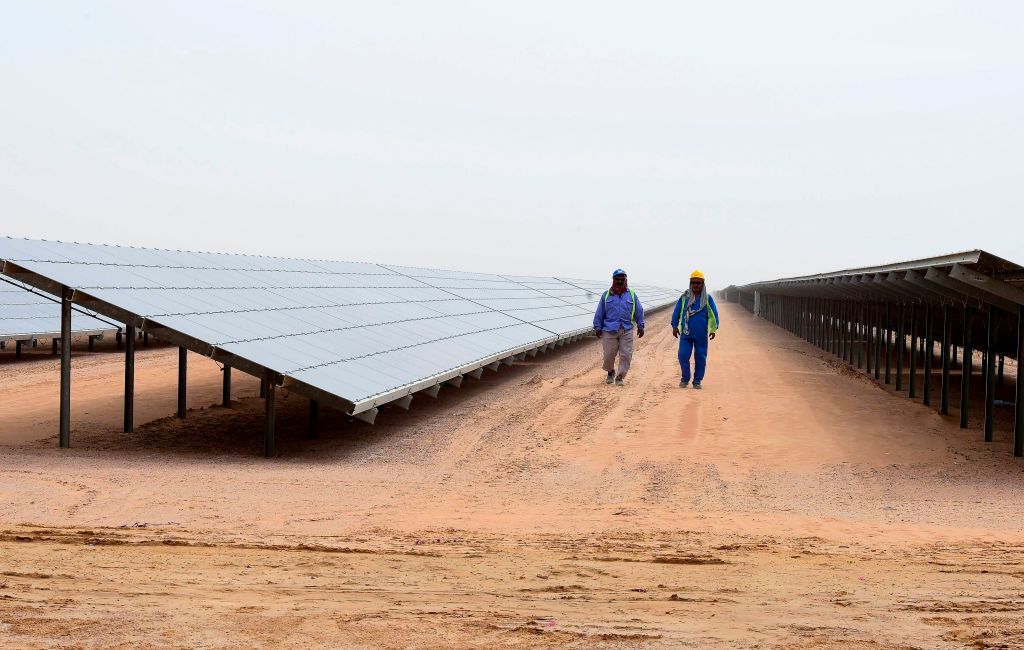What Parts Of World Will Be Affected First By Climate Change
Climate change is expected to bear upon every land in the world, merely its impact will not be felt equally beyond all regions and some will be worse hitting than others because of a range of different threats.
Developing countries, places with widespread poverty, and countries with ineffective governments sometimes confront the gravest risks from the irresolute climate, and are usually poorly equipped to find ways to ready for and foreclose environmental threats.
Measuring the future impact of climate change is very challenging, because scientists' climate alter projections cannot exist completely exact and because there are many different factors that come into play such equally the run a risk of extreme conditions events and rising temperatures. In that location are other non-climatic factors that also determine how severely a city or country will be impacted by climatic change. Niall Smith, who analyzes regions' climatic change vulnerability for the global risk consulting firm Maplecroft, tells Time that it'due south also necessary to counterbalance in what's happening politically and socially in a region to figure out if the country can prepare.
"The places with the least level of economical development are certainly in line to feel the impacts with the greatest degree, partially only due to their geographic fate — or their location — but more than so based on the socio-economical and governance factors," says Smith.
Many developing countries are also uniquely vulnerable, says Kelly Levin of the Globe Resources Institute, "their livelihoods are dependent on natural resources. And if those natural resources are affected by climatic change, their power to feed their families and make a living is significantly impacted."
To get a sense of the challenges dissimilar regions are facing, Fourth dimension spoke to experts about half-dozen countries and cities will be be particularly affected by climate change.
Lagos, Nigeria

A girl carries smoked fish at Makoko shanty town in Lagos on Aug. thirty, 2012.
PIUS UTOMI EKPEI—AFP/Getty Images
Lagos is at "extreme" risk on Maplecroft's Climate change Vulnerability Index. This is especially apropos because its population is expanding rapidly, and it is considered to be a major economic engine for the region.
The governor boasted that Lagos had reached a GDP of $136 billion in 2017, which is virtually a third of the entire state'due south GDP. The city is besides a major transportation hub, with multiple ports and a major international aerodrome and is a regional hub for high tech manufacture. Lagos has "transformed" over the concluding 18 years, Lamido Sanusi, a former key bank governor, told the Financial Times last year. "In terms of roads, in terms of infrastructure, in terms of a general investment surround, in terms of security, the government has given people a greater opportunity to thrive."
Lagos is too at a disadvantage because it'southward considered to be one of the fastest growing cities in the world, which will put a "strain on infrastructure and resources," according to Smith. Its population is projected to nearly double over the next 15 years, growing from its current population of xiii,463,420 to 23,418,770.
In the time to come, Smith warns that Lagos residents will besides feel more hot days and droughts.
Climate change could threaten the city's economy. The city is specially vulnerable because it's located on the Gulf of Republic of guinea, says Levin. Equally sea levels rise, it's likely to affect cause coastal erosion and contaminate drinkable water. This could impairment local agriculture in the countryside and damage the state's angling manufacture, which could be dire in a land with "tremendous" poverty, Levin says.
"You could come across more and more people moving in from the countryside because of loss of economic opportunity into a metropolis like Lagos, which could make the whole situation more challenging," Levin says.
If Lagos struggles, it could seriously reduce economic opportunity in the region.
Haiti

A man walks in street that was flooded in Malfeti, in the city of Fort Liberte, in the urban center of Fort Liverte, in the northward east of Haiti, on Sept. eight, 2017, during the passage of Hurricane Irma.
AFP Contributor—AFP/Getty Images
Climate change can be a "threat multiplier," says Christina Chan, the manager of the World Resource Institute's climate resilience practise. This is especially true for Haiti. The isle nation is located in the "Atlantic Hurricane Basin," which means that it is vulnerable to hurricanes. In comparison to other projections on climatic change, scientists are less certain almost the link between climate change and hurricane frequency and intensity, but studies have suggested that hurricanes are likely getting wetter and more intense due to climate change.
Since Haiti is a very poor country, recovering from natural disasters and preparing for future storms is especially challenging. The devastation in Republic of haiti later on the 2010 earthquake and 2016's Hurricane Matthew was compounded by the country'due south lack of disaster preparedness. The disasters were major setbacks for the country's economic evolution; the $8 billion price tag of recovering from the earthquake surpassed the country'south Gross domestic product, according to the Council on Foreign Relations.
The landscape is also heavily deforested and mountainous, which means it will be more susceptible to landslides.
According to Levin, Republic of haiti will also struggle because the population is dependent on agronomics, and rising ocean levels hateful that common salt water may contaminate freshwater. The United Nations warns that rising bounding main levels may cause saltwater to permeate farmland and freshwater supplies.
"There's certainly a large portion of Haitians that are dependent on agriculture for their livelihoods and income. And if you accept overall patterns of rainfall declines as temperatures rise, certainly that would bear on farmers," Levin says.
Yemen

Moaz Ali Mohammed, a two-yr-one-time Yemeni male child from an impoverished family in the Bani Amer region, who suffers from acute malnutrition and weighing eight kilograms, sits on his mother's lap at their house in the Aslam commune in the northern Hajjah province on July 28, 2019.
ESSA AHMED—AFP/Getty Images
Countries with weak institutions and governments are likely to discover information technology especially difficult to conform to climate alter, says Smith. Since ceremonious war broke out in Yemen in 2015, hundreds of thousands of people take been killed directly equally a consequence of the conflict, but also due to the subsequent famine, poor sanitation and a lack of clean h2o, according to the Un. About i.6 meg children in Yemen are living with malnutrition in 2019, according to the UN.
Both war and climate change volition brand h2o shortages and famine more likely. According to a Untied Nations written report, most contemporary famines result from armed conflict and are worsened past natural disasters.
Every bit the written report explains, "Parties to the disharmonize may utilize nutrient as a weapon, cutting off food supplies, destroying systems of nutrient production and distribution, and stealing food aid. Agricultural production falls, which both limits the availability of food and cuts off many rural houses from their livelihoods. And with college levels of poverty, many families cannot afford the nutrient they need, especially at inflated prices."
Malaria is also becoming more common in Yemen, and may exist exacerbated by ascent temperatures. As Yemen has a long declension, information technology'southward also vulnerable to rising sea levels, co-ordinate to Levin.
An area to watch, says Levin, "Whenever yous're thinking about a country in that region… [is] the issue of rising temperatures impacting water scarcity, especially when information technology's exacerbated by water management challenges and expanding population."
As other countries work to curb their oil consumption, it may be a mixed blessing for Yemen, according to Levin. While lower emissions are believed to be necessary to limit climatic change, it could also reduce demands for ane of Republic of yemen's major imports — oil — which could impact Republic of yemen's economy, Levin says.
Manila

Flood victims are evacuated in a rescue gunkhole after their homes were swamped by heavy flooding in Quezon urban center, suburban Manila, Philippines, Sept. 19, 2014.
NurPhoto—Corbis via Getty Images
The Philippines faces a high adventure of natural disasters, including earthquakes, tsunamis, floods, and especially hurricanes. Manila, which is located forth the declension, is as well densely populated, which makes it more difficult to evacuate, requires more social services and makes it more challenging to rebuild after a disaster. Poor infrastructure, including ineffective drainage and sanitation systems, has been blamed for the toll of floods in the urban center, including a 2009 overflowing that submerged 80% of the city.
However, Chan says that the Philippines is in fact on the "forefront of accommodation" to climate change, and have designated office of their budget to making their state's agricultural sector and infrastructure more resilient, and preparing to respond to time to come disasters. For instance, the regime launched a Flood Management Chief Plan for Metro Manila in 2012, which aims to manage time to come floods by modernizing and building new pumping stations and investing in other infrastructure along waterways, according to the Asian Infrastructure investment Bank.
The Philippines have created a Climate change Committee, which implements programs such as the National Climatic change Action Program, a long-term strategy for prioritizing "nutrient security, water sufficiency, ecosystem and environmental stability, human security, climate smart industries and services, sustainable free energy, knowledge and capacity development."
Kiribati

Damaged roads due to the flooding in Kirbati - Tarawa's single paved road has complanate because of the flooding from the sea. The people of Kiribati are under pressure to relocate due to sea level rise. Each year, the sea level rises past about half an inch. Though this may not sound like much, it is a big deal considering the islands are merely a few feet above sea level, which puts them at gamble of flooding and bounding main swells.
Jonas Gratzer—LightRocket via Getty Images
Rise sea levels hateful that Kiribati may be wiped off the map entirely in the coming decades. The islands take even purchased 5,000 acres of country in Fiji in case they need to relocate.
While Kitribati, like many other countries, is taking steps to fix for climatic change, the Pacific island nation must also reckon with the fact that "for their island, accommodation volition take its limits," says Chan. The islands are only 6 anxiety above body of water level and sit down upon a system of atolls and reef islands, which means that rising sea levels are a threat to the nation's existence.
This vulnerability has likewise spurred Kiribati to take serious steps in climate mitigation. Kiribati has allied itself with other vulnerable island countries to advocate for action to fight climatic change, and taken other measures such equally planting mangrove copse and building body of water walls.
Meanwhile, Levin says, rise sea levels are likely to contaminate the island'south freshwater and harm its soil, which is not especially fertile for agriculture to begin with. The island'southward vital angling manufacture is also more than vulnerable, as climate changes leads to shifts in the ocean, including coral bleaching; damage to the structure of reefs; marine "rut waves"; and other weather that force marine life to motility north.
United Arab Emirates

Employees walk past solar panels at the Mohammed bin Rashid Al-Maktoum Solar Park on March 20, 2017, in Dubai.
STRINGER—AFP/Getty Images
Similar many of the other places on this list, the United Arab Emirates is facing many risks due to its location. Like Yemen and other neighboring states, the UAE is facing an "extreme chance" of water stress, according to Smith, and volition need to spend a lot more energy on cooling.
Unlike many other countries facing these threats, still, the UAE is wealthier and is able to brand sophisticated investments to blunt the impact of climate alter. For instance, the UAE is working to produce its own fresh h2o, build temperature-controlled spaces, investments in green energy, and developing crops that tin withstand hotter temperatures.
Yet, according to Levin, information technology remains to be seen whether these adaptations will reach Yemen's entire population, because the country faces rampant inequality.
"The question is, will adequate investments be made in time, and volition the poorest be able to enjoy the aforementioned kind of comforts as the remainder of the population," Levin says. "You can look at the confront of a Gdp of a given country. But that really masks tremendous inequality. It'southward hard to necessarily say that ane land'due south in such a amend position to withstand climate impacts."
Source: https://time.com/5687470/cities-countries-most-affected-by-climate-change/
Posted by: bartleytheds1985.blogspot.com

0 Response to "What Parts Of World Will Be Affected First By Climate Change"
Post a Comment